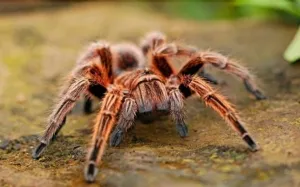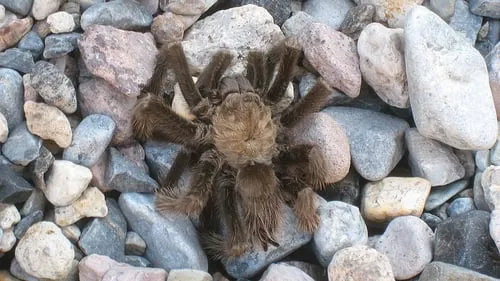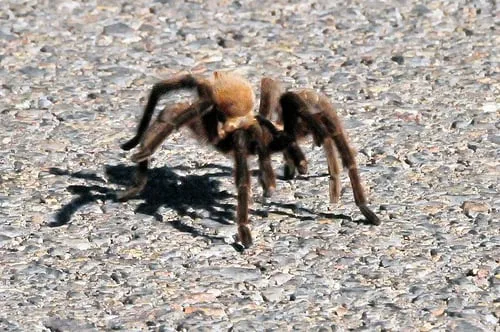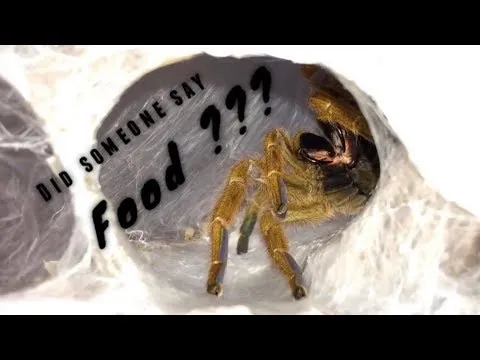The Real Cost of a Tarantula
Considering a tarantula as a pet? Before you bring one home, it’s crucial to understand the financial commitment involved. The initial purchase price of the tarantula is just the beginning. Owning a tarantula means ongoing expenses for food, habitat maintenance, and potential veterinary care. This comprehensive guide will break down all the costs associated with tarantula ownership, helping you determine if it fits your budget and lifestyle. Knowing the true cost allows you to make an informed decision and ensure you can provide the best possible care for your eight-legged friend. Budgeting is important, as it can affect the health and wellbeing of your pet.
Initial Tarantula Purchase Costs
The first expense you’ll encounter is the cost of the tarantula itself. Prices can vary significantly depending on several factors, including the species, size (specifically the age of the tarantula), and the breeder or pet store you purchase from. Some common species are more affordable, while rarer or more exotic ones can command higher prices. Furthermore, younger tarantulas (spiderlings) are typically cheaper than adults. It’s important to factor in these variables to gauge an estimated price before even starting the process. In addition to the species, the price will also fluctuate depending on the breeder or vendor.
Tarantula Species & Price Variation

Different tarantula species have vastly different price points. For example, a common, readily available species like the Chilean Rose Hair tarantula might cost between $20-$50, making it a relatively affordable option for beginners. Conversely, rarer or more colorful species, such as the Cobalt Blue tarantula or certain ornamental tarantulas, can cost several hundred dollars, or even more. Researching the specific species you’re interested in is essential to determine the initial cost and understand the long-term care requirements. Understanding the pricing by species will help set a better idea and expectations before you even begin.
Factors Affecting Tarantula Prices
Beyond species, several other factors influence tarantula prices. The tarantula’s size and age play a significant role, with juveniles generally being less expensive than adults. The breeder’s reputation and the tarantula’s lineage can also impact the price; tarantulas from reputable breeders with known genetics may cost more. The overall health and appearance of the tarantula are important, and those that look vibrant and healthy may be priced higher. Also, the geographic location and market demand can affect prices, with certain species being more expensive in some areas than others. Therefore, conducting thorough research can help you get a better understanding and expectation of the price.
Essential Enclosure Setup Costs
Setting up a proper enclosure for your tarantula is a crucial part of responsible ownership. The initial setup costs include the enclosure itself, substrate, decorations, and any necessary equipment for maintaining temperature and humidity. Skimping on enclosure setup can be detrimental to the tarantula’s health and well-being, potentially leading to a shorter lifespan or increased veterinary expenses down the line. Therefore, allocating an appropriate budget for a suitable environment is vital to ensure the tarantula’s comfort and health. This could also be used for various stages of the tarantula’s lifecycle as the setup can vary.
Enclosure Size & Material Considerations

The size and material of the enclosure are critical considerations. The enclosure should be large enough for the tarantula to move around comfortably, with adequate space for molting and foraging. Acrylic or glass enclosures are popular choices, offering good visibility and durability. The price of enclosures varies depending on the size and material, so it’s essential to choose an appropriate size that accommodates the species’ adult size. Also, enclosures should have secure lids to prevent escapes and ensure the safety of both the tarantula and the household. Ensure that the enclosure is also easy to clean and maintain to provide the best environment.
Substrate & Decor Costs
Substrate, which forms the base of the enclosure, is necessary for moisture retention, burrowing (for terrestrial species), and providing a comfortable environment. Common substrates include coconut fiber, peat moss, and vermiculite. The cost of substrate is relatively low, but you’ll need to replace it periodically to maintain hygiene. Decorations, such as hides, branches, and artificial plants, provide enrichment and shelter for the tarantula. Prices for decor vary depending on the items’ complexity and materials, but you can often find affordable options at pet stores or online. The choice of substrate can be influenced by the tarantula’s species and habitat needs. This helps create a natural environment for the spider.
Ongoing Tarantula Care Costs
The costs don’t stop once you’ve purchased the tarantula and set up its enclosure. Ongoing expenses for food, substrate, and other supplies can add up over time. Also, the tarantula’s feeding habits and enclosure maintenance will influence the frequency and cost of these purchases. Furthermore, occasional veterinary checkups and unexpected health issues can contribute to additional expenses. Therefore, it’s essential to factor in these recurring costs when assessing whether you can afford to own a tarantula. Making sure you have enough funding will affect the spider’s health, and that of your pocket.
Food & Feeding Expenses

Tarantulas are carnivores, and their diet typically consists of insects, such as crickets, mealworms, roaches, or other invertebrates. The cost of food varies depending on the type of insect, the quantity purchased, and your location. Purchasing insects from a reputable supplier is essential to ensure they are free from pesticides and diseases. Many owners buy insects in bulk to save money, but you must also consider the cost of keeping the insects alive. Also, the feeding frequency will depend on the tarantula’s age, size, and species. Spiderlings, for example, need to be fed more often than adults. This should all be calculated.
Live Insect Costs
Live insects are the primary food source for most tarantulas. The cost of live insects can vary widely depending on the species and the quantity you purchase. Crickets are a common and relatively inexpensive food choice, but they can be noisy and may need to be replaced frequently. Mealworms are another popular option and can be easier to manage, but they have a lower nutritional value. Roaches, such as dubia roaches, are often considered a more nutritious and cleaner option, but they may cost more. You can reduce costs by purchasing insects in bulk, raising your own feeders, or finding a local supplier. Make sure that you have enough food for the tarantula at any given time.
Pre-killed Food Options
While live insects are the most natural food source, some tarantula owners choose to feed their pets pre-killed insects. This can be a practical option if you’re uncomfortable with live insects or if you want to avoid the hassle of housing and maintaining feeder insects. Pre-killed insects, such as frozen crickets or mealworms, are readily available at pet stores. The cost of pre-killed food is often slightly higher than live food, but it can be more convenient. The choice depends on your preference and the tarantula’s willingness to accept pre-killed food. Also, you need to consider the nutritional value and the freshness of the food that you feed the tarantula.
Temperature & Humidity Control

Maintaining the correct temperature and humidity levels is crucial for a tarantula’s health and well-being. The cost of heating and humidity control equipment varies depending on the size of the enclosure and the specific needs of the tarantula species. Monitoring equipment, such as thermometers and hygrometers, is essential for keeping track of the environmental conditions. Neglecting to maintain the correct temperature and humidity can lead to health problems, such as molting issues or respiratory infections. Having the right equipment can help prevent issues and the cost will affect the well-being of your pet.
Heating & Lighting Equipment
Depending on your climate and the tarantula’s species, you may need to provide supplemental heating. This can be achieved using heat lamps, heat mats, or ceramic heat emitters. Heat lamps are suitable for heating the air in the enclosure, while heat mats are designed to provide warmth from below. Ceramic heat emitters provide heat without emitting light, which is beneficial for nocturnal tarantulas. The cost of heating equipment varies depending on the size and the type. Proper lighting is not usually necessary, but a low-wattage bulb can be used for viewing. Having the proper equipment will affect the spider’s health and wellbeing, so choose wisely.
Monitoring Equipment Costs
Monitoring the temperature and humidity levels in the enclosure is essential for maintaining a healthy environment for your tarantula. You’ll need a reliable thermometer and hygrometer to measure these factors. Digital thermometers and hygrometers are accurate and easy to read, and they often provide both temperature and humidity readings. These devices are relatively inexpensive, but they’re essential for ensuring the tarantula’s well-being. Investing in these tools helps to prevent potential problems and allows you to create a comfortable and healthy environment for your pet. Regularly checking is a must.
Veterinary Care & Unexpected Expenses

Even with the best care, tarantulas can sometimes encounter health issues. Veterinary care for tarantulas is not as common as for other pets, so finding a veterinarian who specializes in exotic animals is crucial. The cost of veterinary visits, medications, and treatments can be significant. Furthermore, tarantulas can experience unexpected expenses, such as the need to replace a broken enclosure or purchase specialized supplies. Therefore, it’s essential to have an emergency fund to cover unexpected costs. Budgeting for veterinary care can save your wallet from a lot of stress in the long run.
Potential Health Issues and Treatments
Tarantulas, like any pet, can develop health problems. Common issues include parasitic infections, molting problems, injuries, and bacterial infections. The cost of treating these conditions can vary greatly depending on the severity of the problem and the treatment required. Some minor issues can be addressed at home, while more serious conditions require veterinary intervention. The cost of veterinary care for a tarantula can be higher than for more common pets, so it’s essential to research veterinarians in your area before acquiring a tarantula. Research can save money, as some issues can be treated at home, and others will need a veterinarian.
Emergency Preparedness
It’s wise to be prepared for emergencies. This includes having an emergency fund to cover unexpected veterinary bills or the cost of replacing damaged equipment. You should also have a plan in place for what to do if your tarantula becomes ill or injured. This may involve identifying a veterinarian who treats exotic animals and having their contact information readily available. Also, having the supplies on hand to provide basic first aid can be helpful. Being prepared for emergencies will reduce stress and financial burden.
Long-Term Cost Analysis

Owning a tarantula is a long-term commitment, and the costs associated with its care will continue throughout its lifespan. The lifespan of a tarantula varies depending on the species and sex, with females often living much longer than males. Therefore, when considering the cost of a tarantula, you should factor in the ongoing expenses for food, substrate, enclosure maintenance, and veterinary care over several years. A long-term cost analysis will give you a more realistic understanding of the financial investment involved. This will help you make better budgeting decisions.
Cost-Saving Strategies for Tarantula Owners
There are several ways to save money on tarantula care without compromising the quality of care. Purchasing supplies in bulk, such as substrate and food, can significantly reduce costs. Raising your own feeder insects can also be a cost-effective option. Also, you should research different vendors, and compare prices before making purchases. Creating a budget and sticking to it is essential for responsible tarantula ownership. Careful planning will help you provide a happy and healthy environment for your tarantula. Considering the long-term costs will prepare you to be a responsible pet owner.
